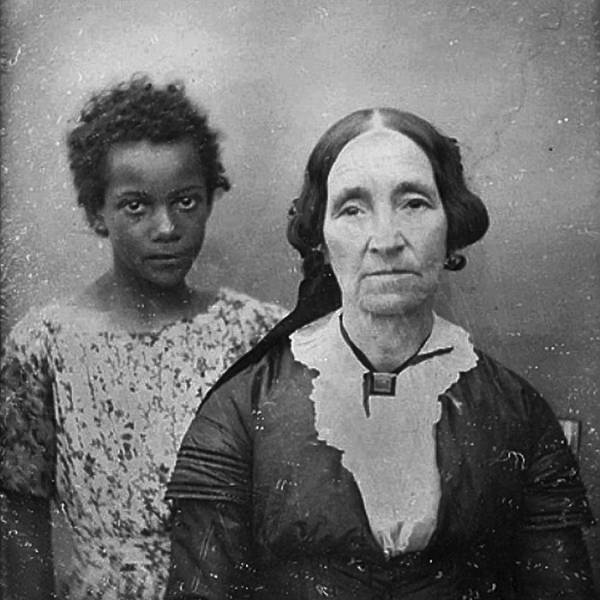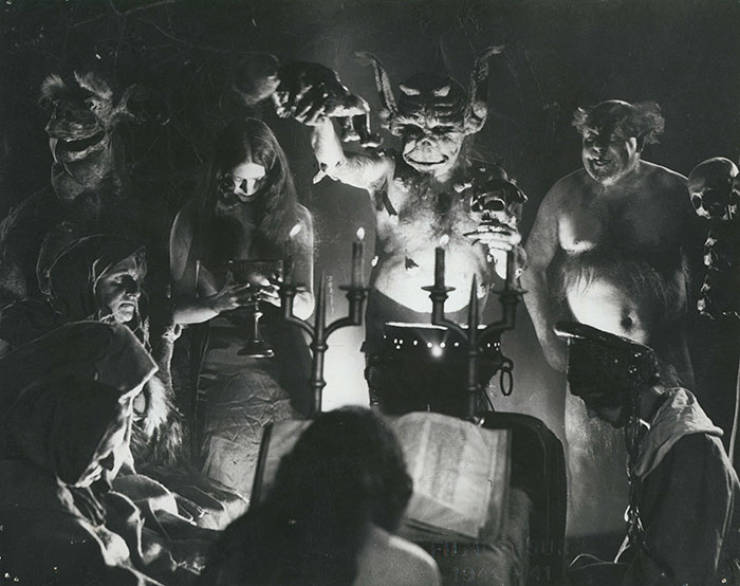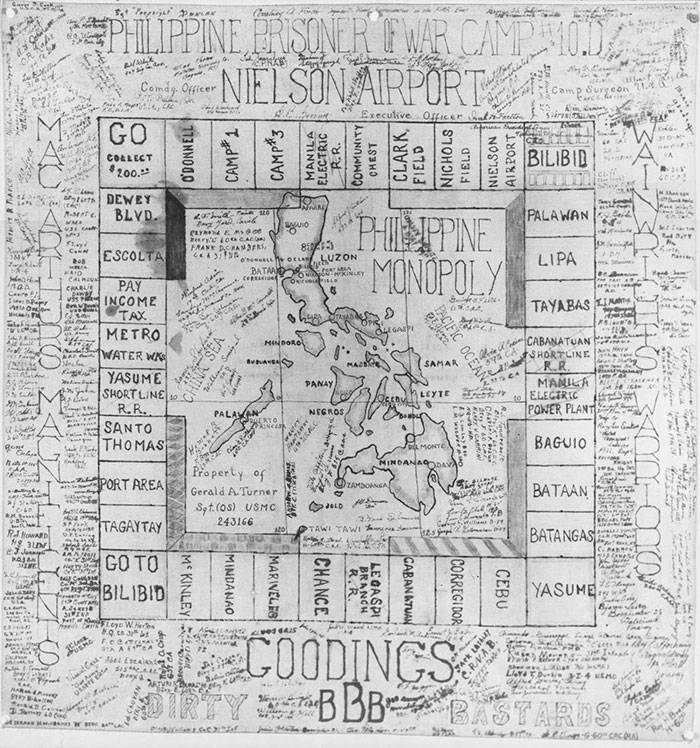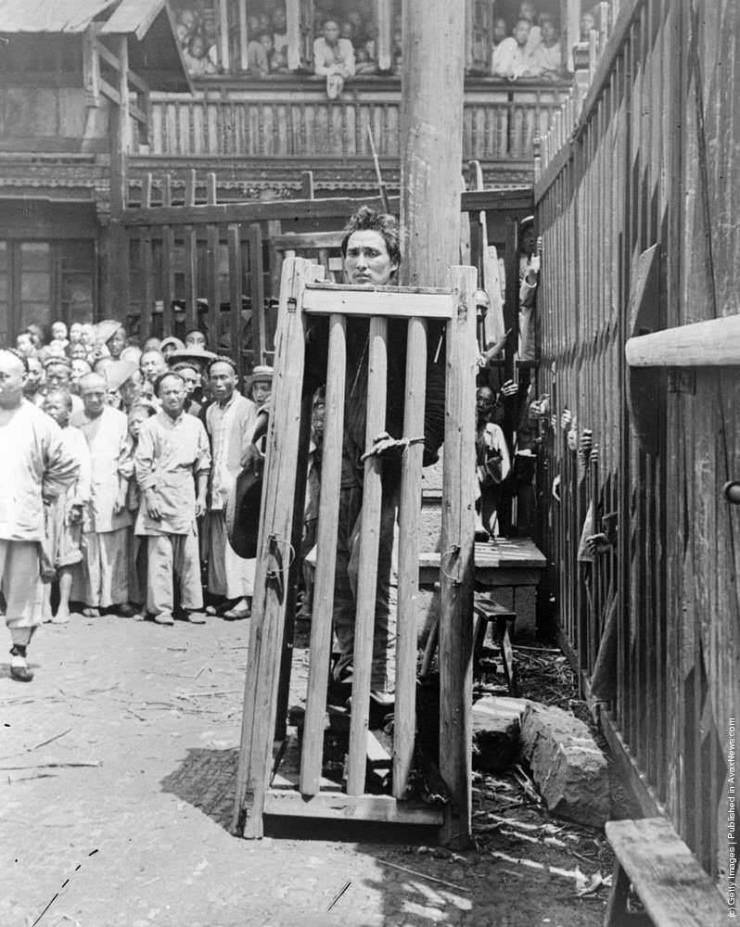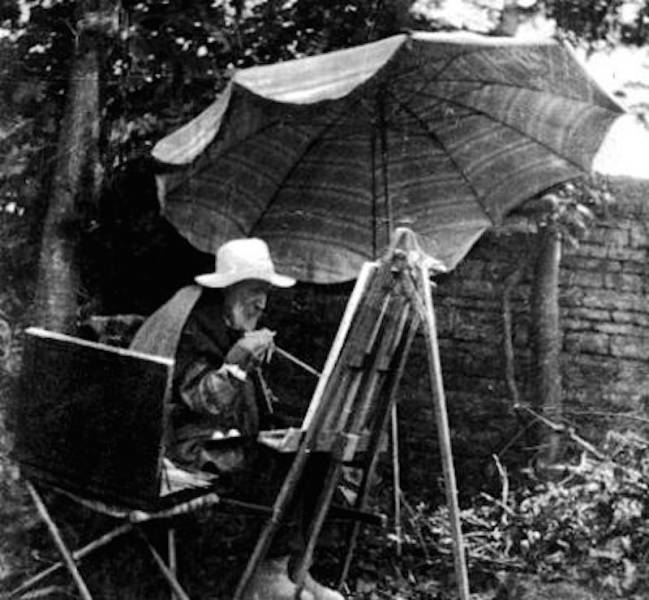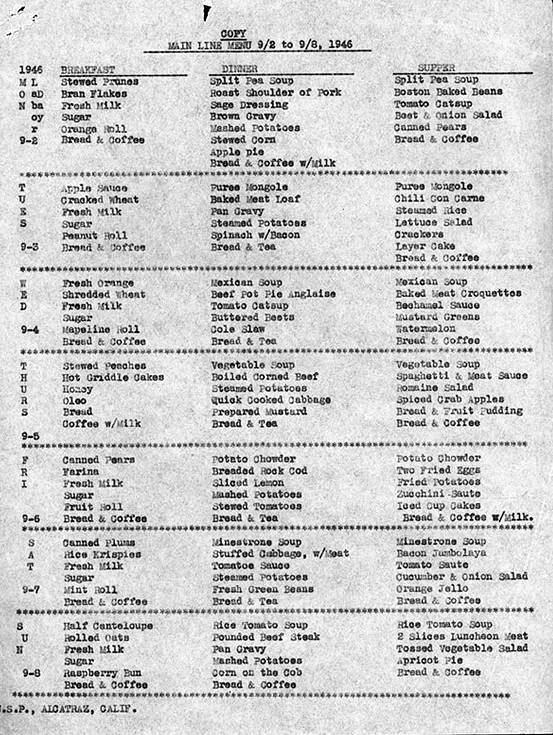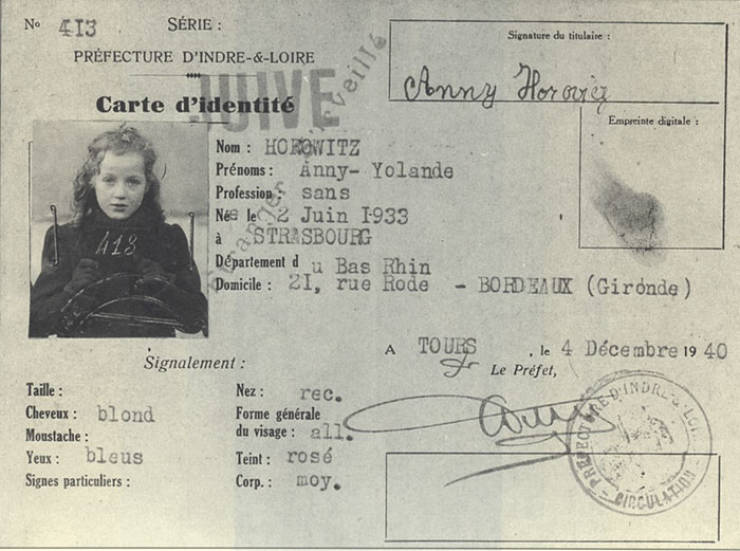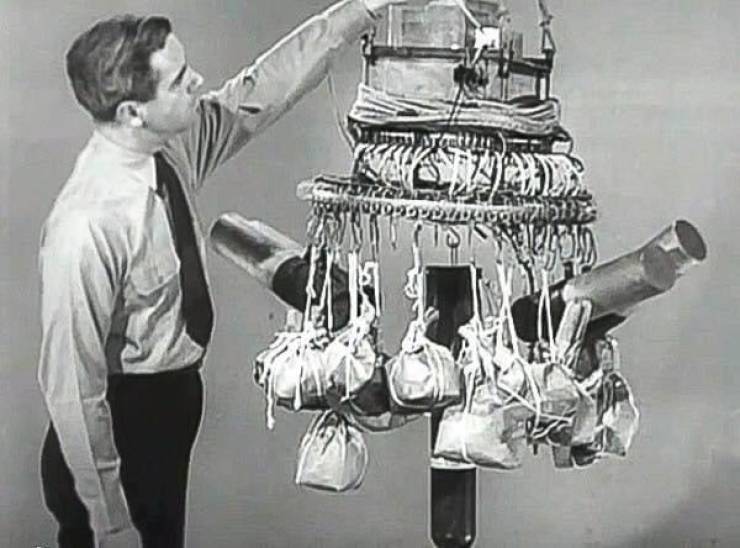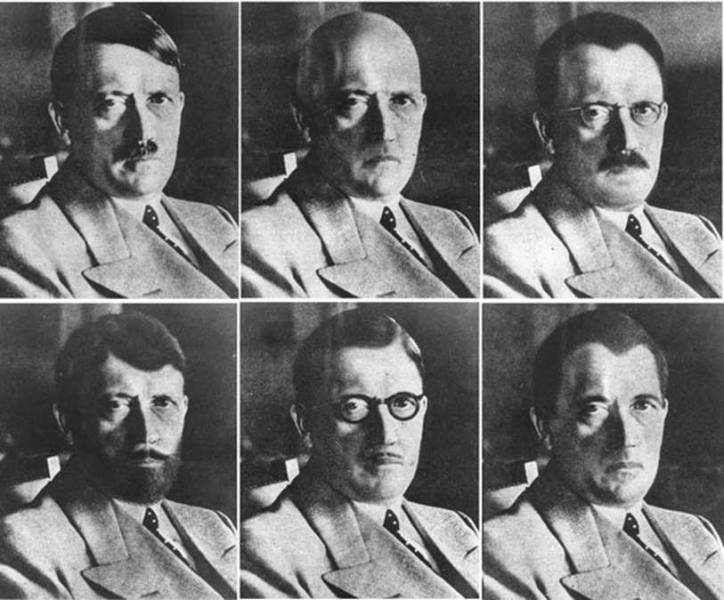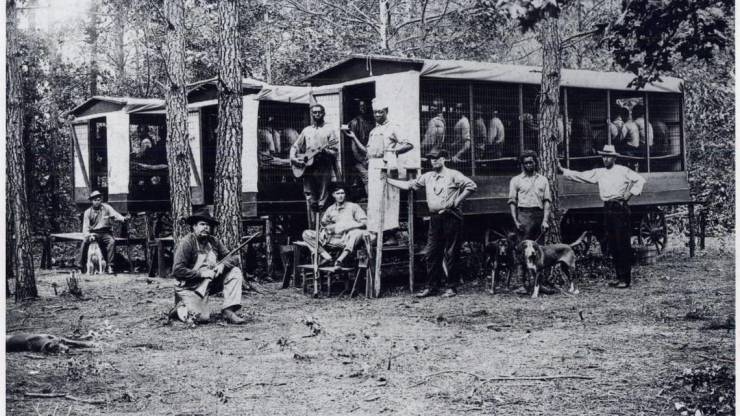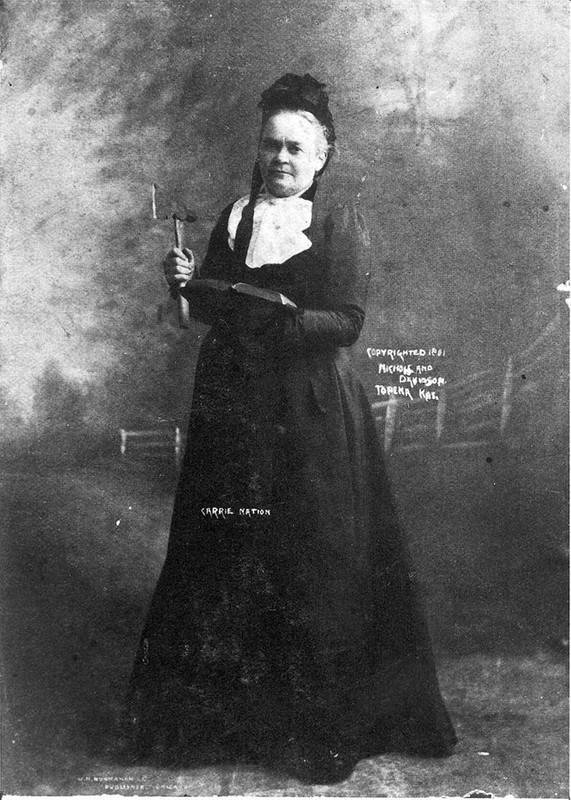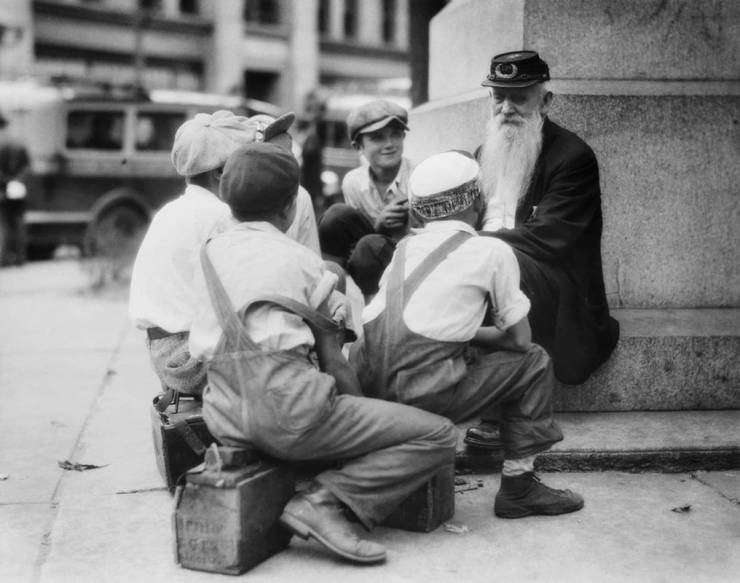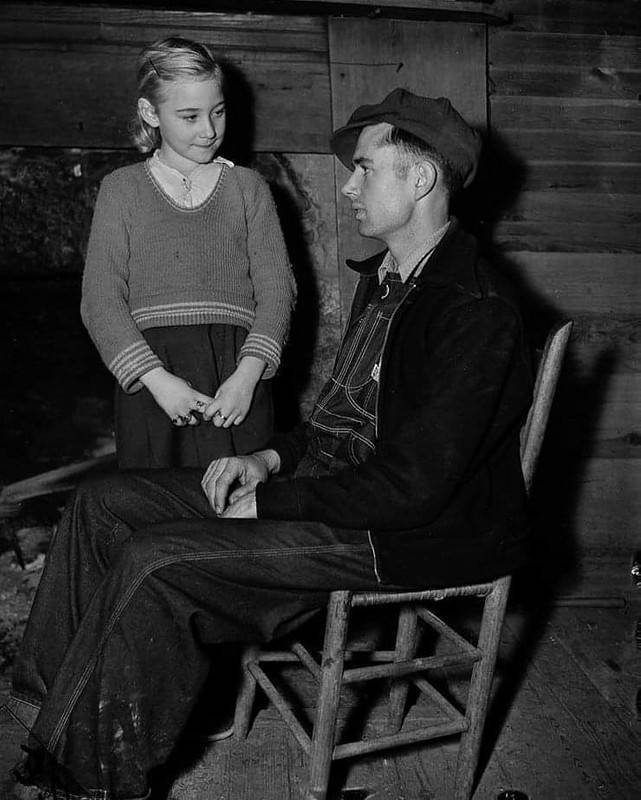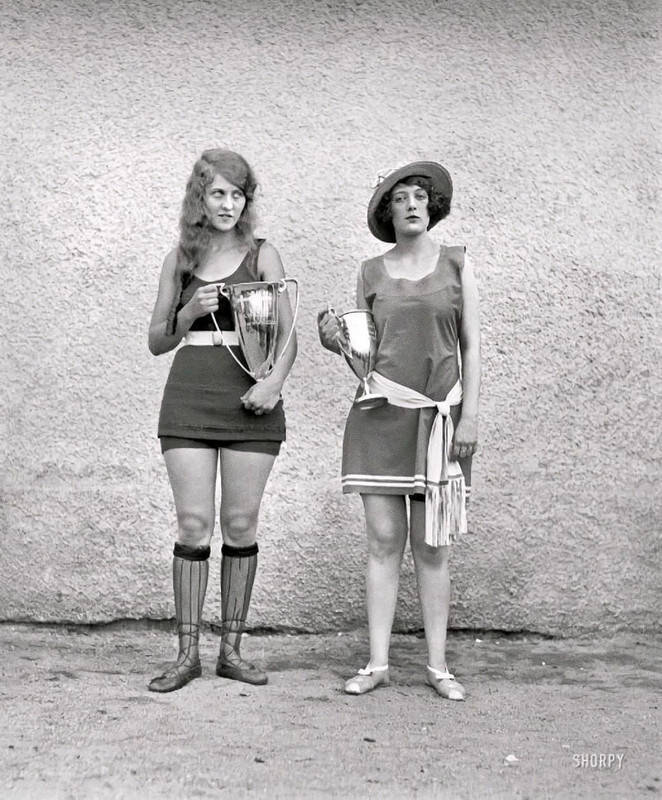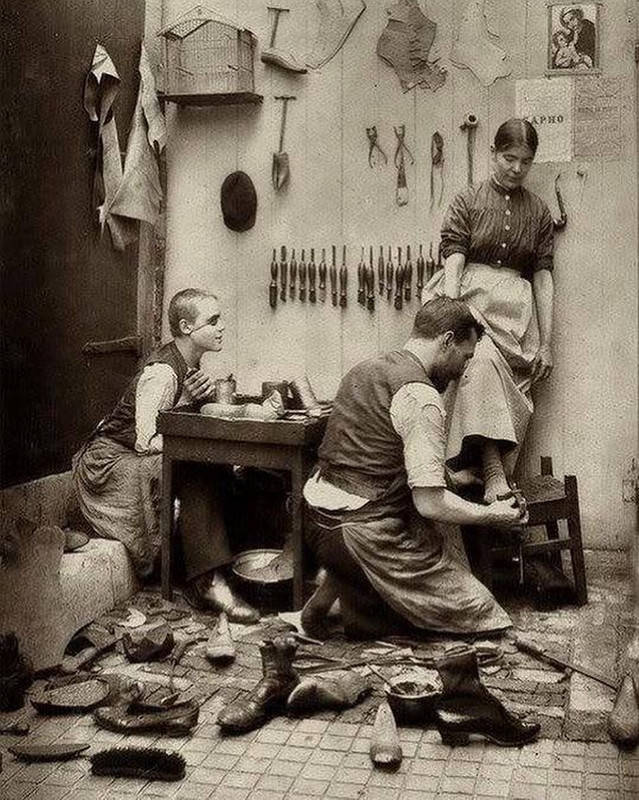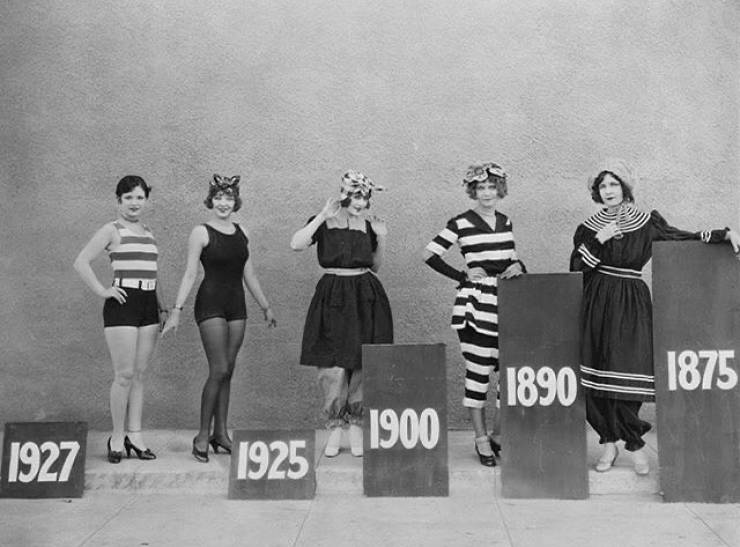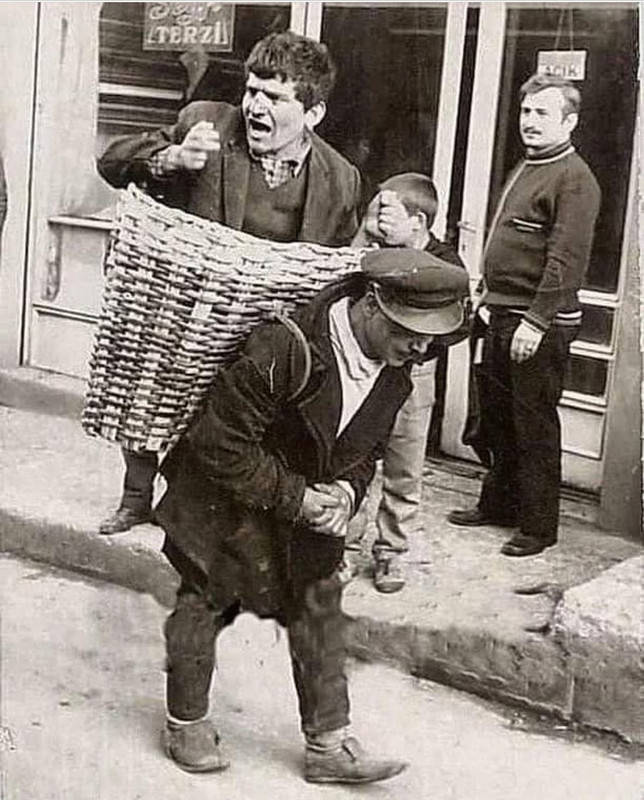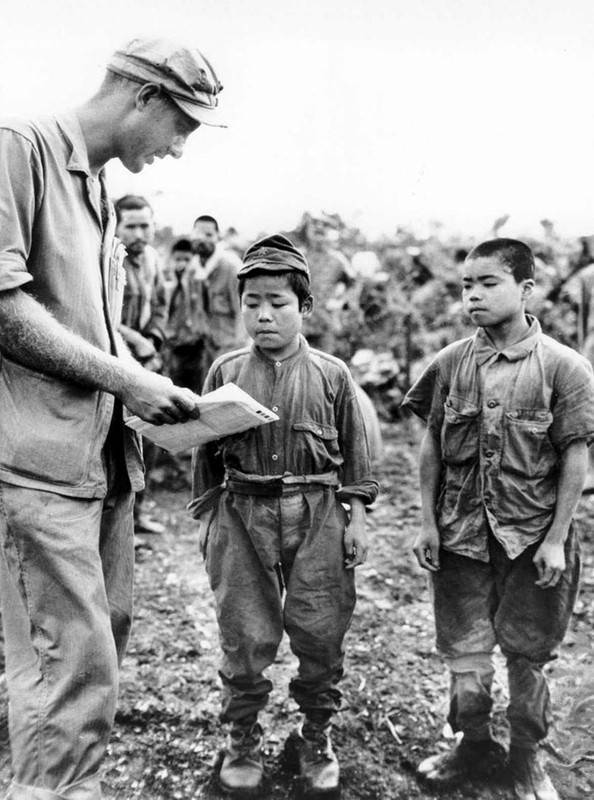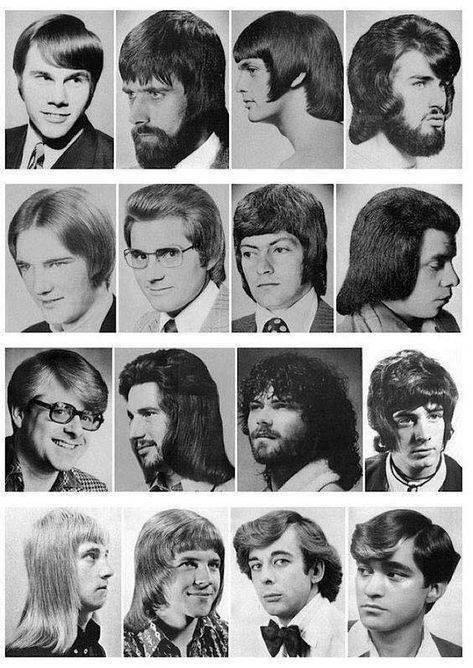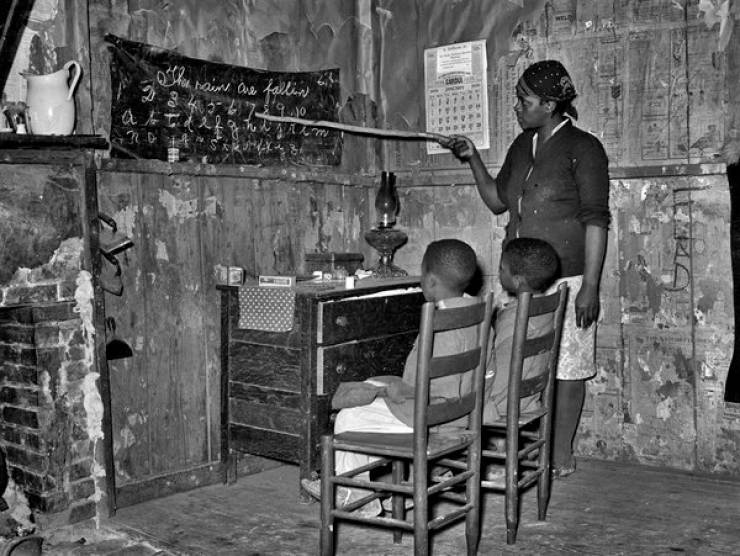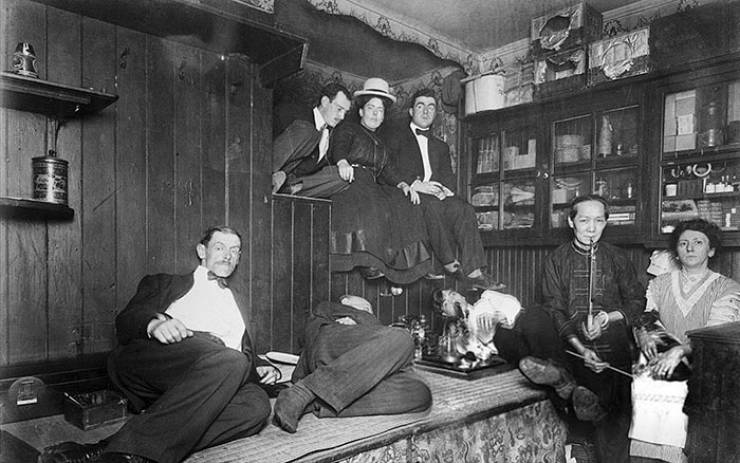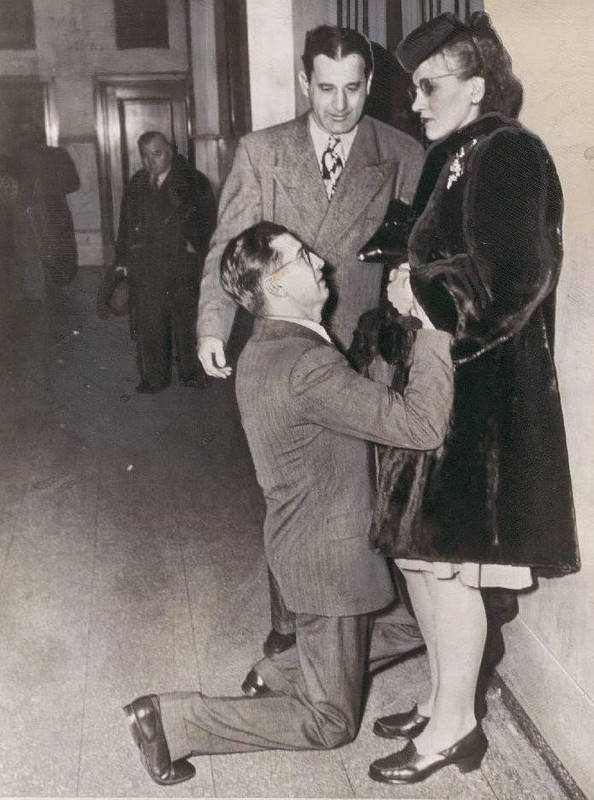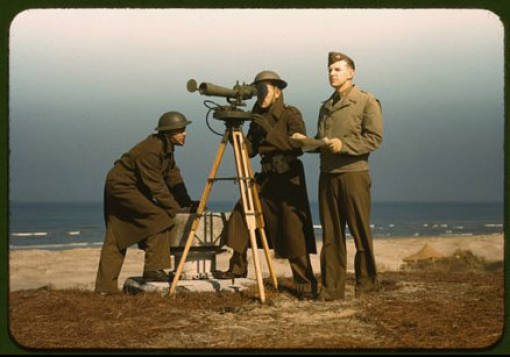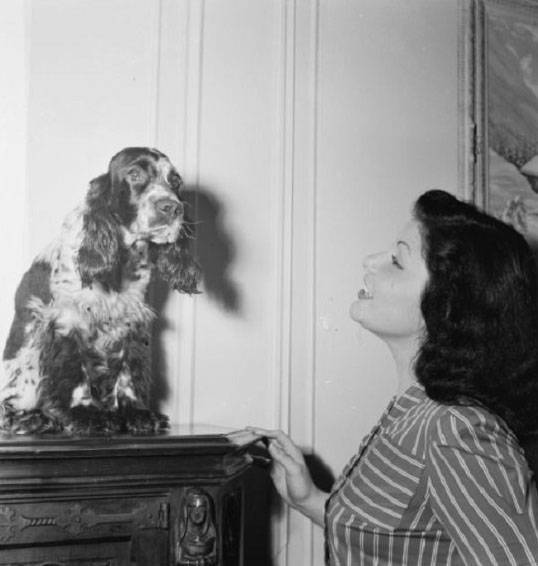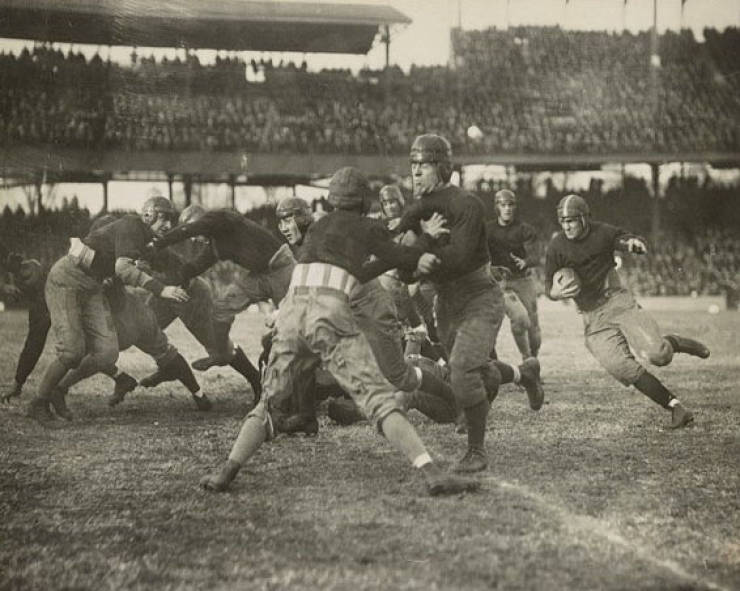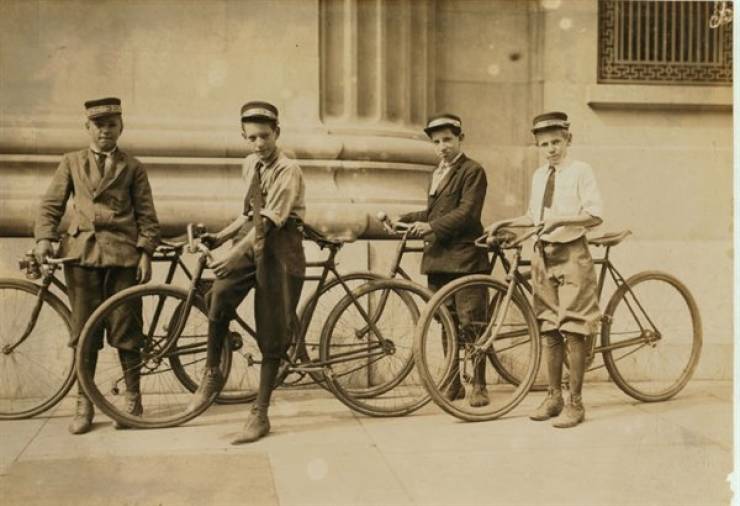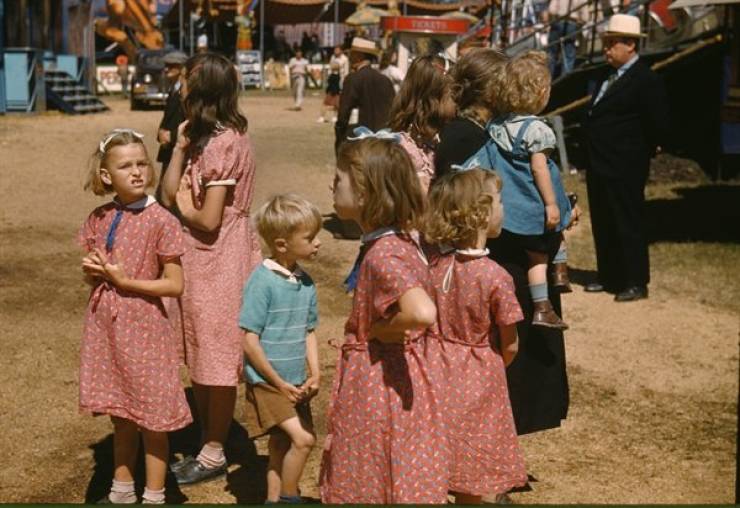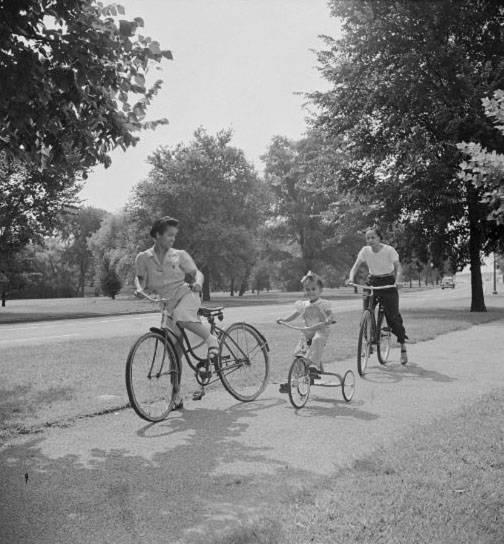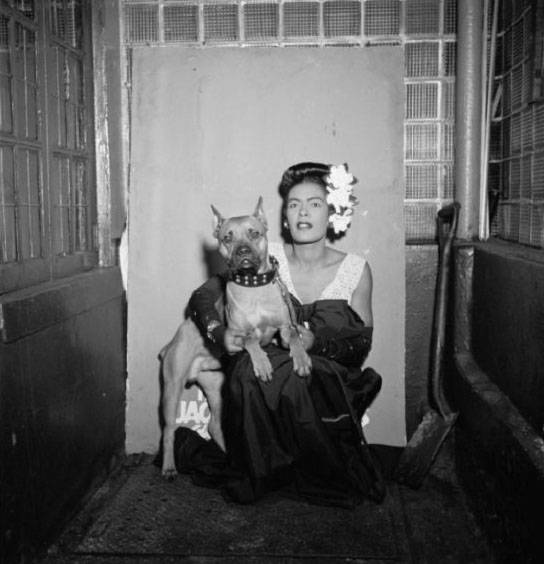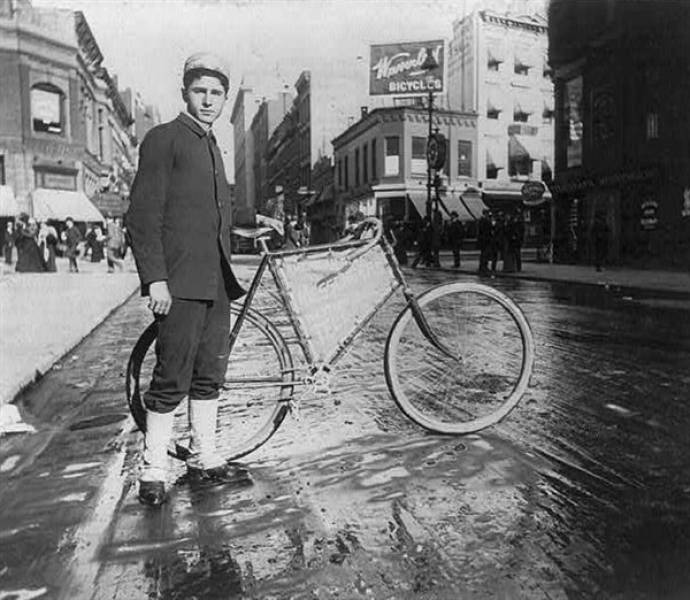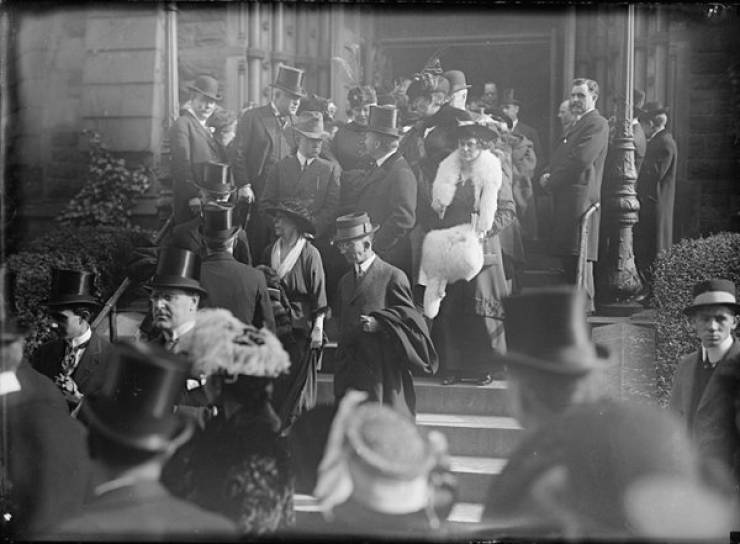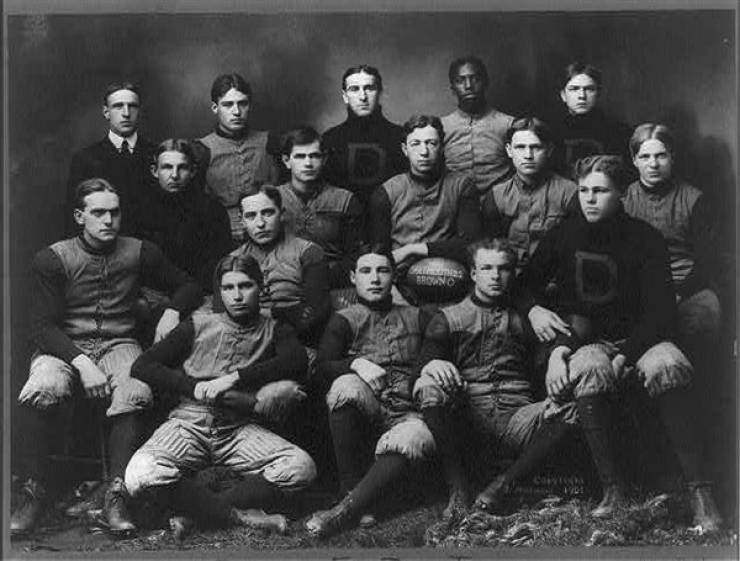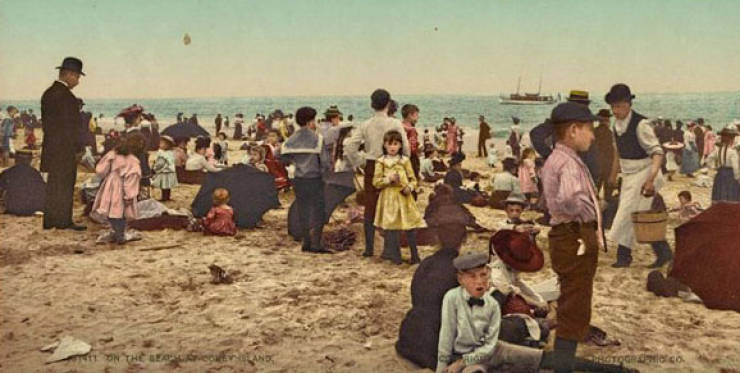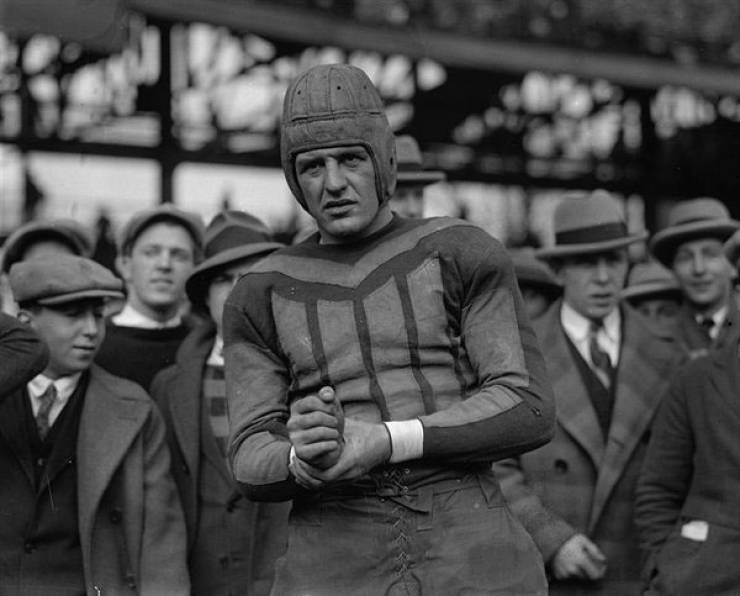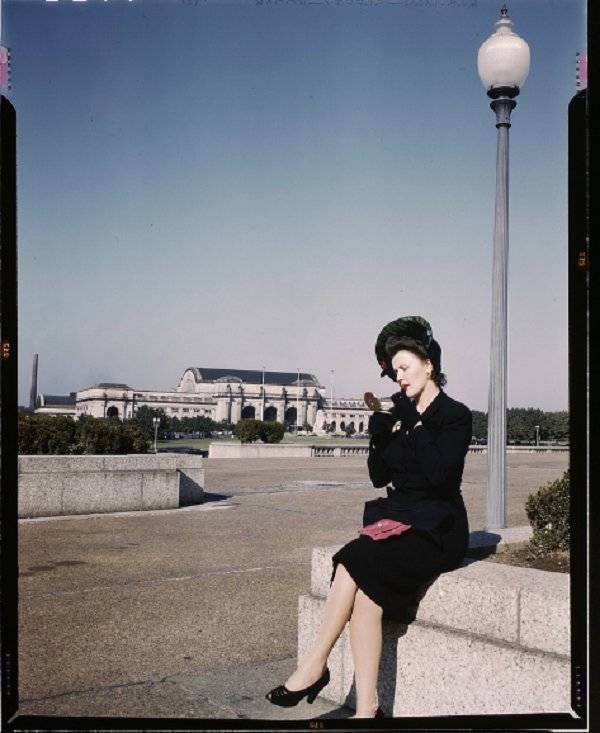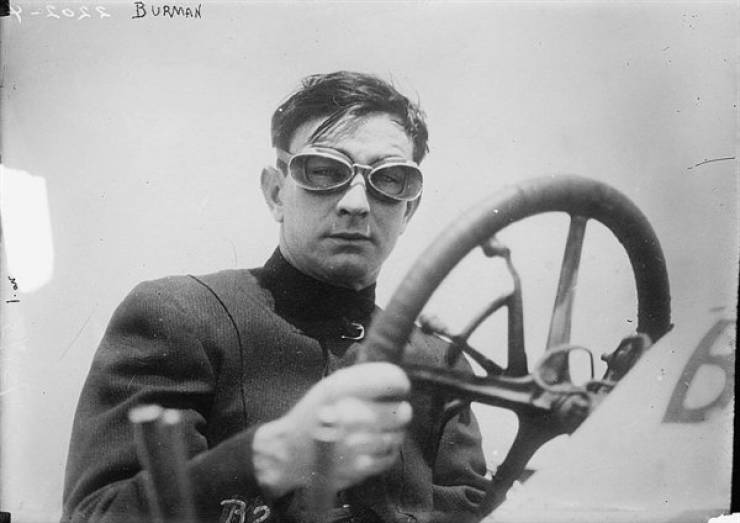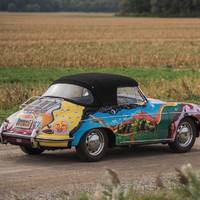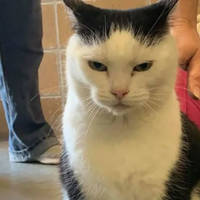A woman takes a portrait with one of her child slaves in New Orleans, US in 1850.
A promotional picture for the film “Häxan: Witchcraft Through the Ages”, which was a 1922 Swedish-Danish silent film.
Monopoly board created by POWs held captive in the Philippines by the Japanese during WWII
A river pirate who killed at least 6 people including gouging a victims eyes out is awaiting his execution in China in 1900
He is standing on stones or wood beams. Each day, 1 will be removed as his head is secured on the top. Eventually he will have nothing to stand on and strangle to death.
Arthritis-ridden Renoir painting flowers at his garden, circa 1910’s
Alcatraz Prison Menu from 1946
The food in Alcatraz Prison was so good that the guards and prison staff ate the same exact meals as the prisoners. This was because the warden believed most trouble in prison is caused by bad food.
The identification card of Anny Horowitz, a French Jewish girl murdered in Auschwitz, 1940
A Japanese balloon bomb. Late in WW2 the Japanese attached bombs to balloons and sent them drifting to the western US coast.
The only one that killed anybody, killed a pastor’s wife and five kids on a Sunday School picnic in Bly, Oregon
US intelligence images of how Hitler could have disguised himself, 1944
Prison labor, Pitt County North Carolina, 1910.
The prisoners were transported in caged wagons to road work projects. Note the cook, musician, armed deputy and bloodhounds.
Carrie Nation and Her Saloon Smashing Ax, 1901
Carrie Nation, like many women of her era, believed alcohol and alcoholism contributed to nearly all the world’s problems. Rather than simply march or give speeches (which she did), Carrie took her crusade one step further and used her little hatchet there to break up saloons and bars. Literally, hacking bars, tables, doors, bottles and driving patrons away. She was arrested more than a dozen times for property damage, disturbing the peace, etc.
Shoe shine boys listen to Civil War veteran tell his war stories, 1920s
9-year old Eunice Winstead Johns and her husband, Charlie Johns, 22, at their home. Sneedville, Tennessee, United States. February 2, 1937.
The winners of the 1922 Tidal Basin Bathing Beauty Contest. Washington, D.C., 1922.
Shoemakers in the 19th century
Shoemaking was a traditional handicraft, but by the century’s end, the process had been almost completely mechanized, with production occurring in large factories.
Shoemakers generally used leather, wood, and plant material, and often consisted of multiple parts for better durability of the sole. They used more than 15 different techniques of making shoes. At that time shoes were made by hand and one at a time.
Princess Fatemeh Khanum was Naser al-Din Shah’s second daughter. Naser al-Din Shah was the longest reigning monarch and ruled as the Shah (king) of Persia from 1848 until his assassination in May 1896.
The progress of female bathing suits from 1875-1927
A drunken man in a basket. Bars in Turkey employed basket man who’s job it was to take patrons home who were too drunk to stand up. Istanbul 1960s.
An American Marine tries to communicate with two Japanese child soldiers captured on Okinawa, June 1945
1970’s Barbershop Haircutting guide
African-American, sharecropper & mother teaching her children numbers and alphabet at home. Louisiana,1939.
New York City opium den in 1925
A man begging for his wife’s forgiveness inside Divorce Court. Chicago, ca. 1948
Men of Fort Story operate an azimuth instrument, to measure the angle of splash in sea-target practice, Fort Story, Va. 1942.
Chicago, Illinois. In the waiting room of the Union Station, 1943.
Herman A. “Germany” Schaefer (1876-1919), one of the most entertaining characters in baseball history, 1911.
Portrait of Lilyann Carol, New York, N.Y., ca. Oct. 1946
Mrs. Flagg portrait, 1901.
A football game C. 1920.
Group of Western Union Messengers in Norfolk, Va. 1911.
At the Vermont state fair, Rutland, 1941.
Sunday cyclists in East Potomac Park, Washington, D.C. 1942.
Portrait of Billie Holiday and Mister, Downbeat, New York, N.Y., ca. Feb. 1947
Street types of New York City: Messenger boy and bike, 1896.
A crowd on Thanksgiving Day 1915.
Dartmouth football team, 1901
On the beach at Coney Island, 1902.
“Red” Harold Grange, 1925.
Woman putting on her lipstick in a park with Union Station behind her, Washington, D.C. 1943.
Bob Burman, race car driver, C. 1910.

